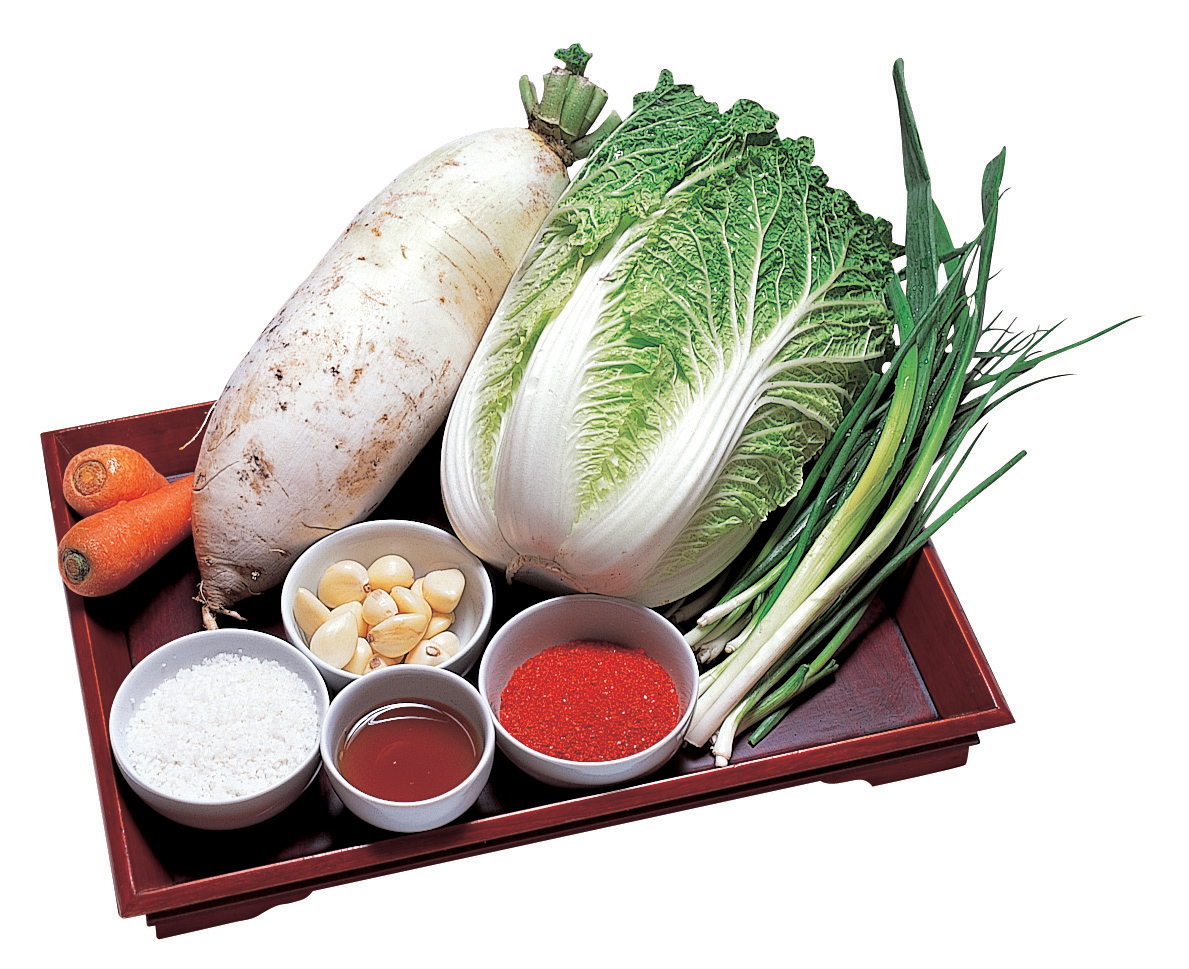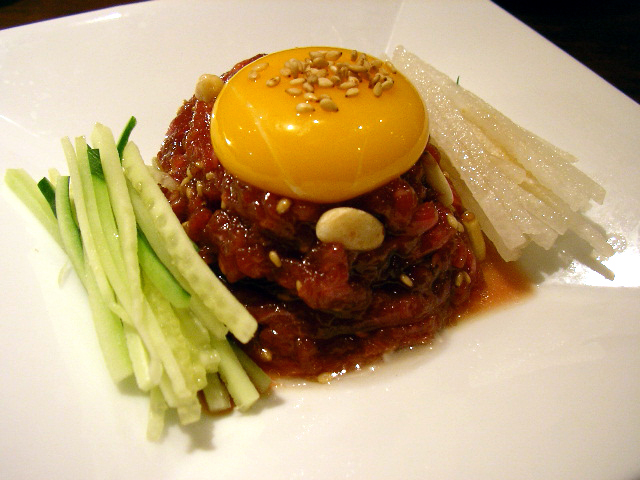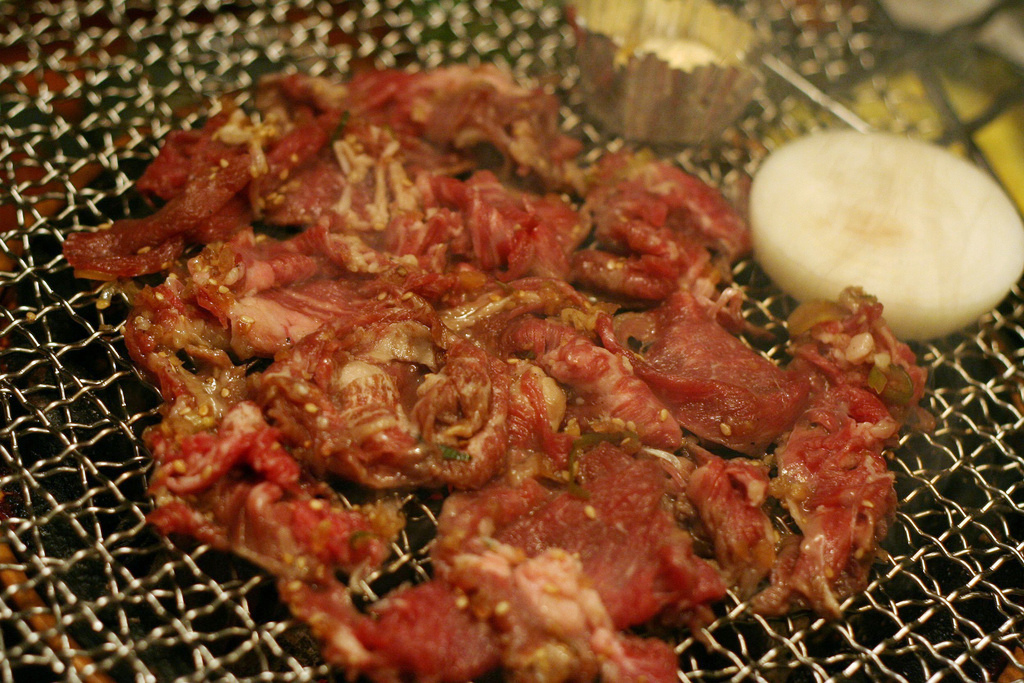|
Cheonhwang Sikdang
Cheonhwang Sikdang () is a historic restaurant in Jinju Jungang Market, Jinju, South Korea. It is among the oldest active restaurants in South Korea, having been founded in 1927. It specializes in the dish Jinju ''bibimbap''''.'' It was established in 1927. It was called Daebang Halmae () and became renowned for its bibimbap. During the 1950–1953 Korean War, its original building was bombed and destroyed. The restaurant was rebuilt after the war by the original founder's daughter-in-law, Oh Bong-sun (). It was reported in 2004 that the restaurant had been using the same building since. A 2004 and a 2019 article claimed that the restaurant was on its third generation of owners. A 2006 article claimed the chairs and tables resembled the Japanese-Western Eclectic Architecture style. The restaurant's menu is reportedly intentionally small. In addition to its Jeonju bibimbap, it serves the marinated meat dish ''bulgogi'', the raw beef dish ''yukhoe'', and the soup '. The restauran ... [...More Info...] [...Related Items...] OR: [Wikipedia] [Google] [Baidu] |
Jinju
Jinju (; ) is a city in South Gyeongsang Province, South Korea. It was the location of the first (1592) and second (1593) Sieges of Jinju by Japanese forces during the Imjin War. The Republic of Korea Air Force Education and Training Command is located in the eastern part of the city. There are cultural-historical tourist attractions in Jinju such as Jinju Fortress, the Jinju National Museum, and the Nam-gang Prehistoric Site Museum. History Jinju was an ancient city of Goryeonggaya in the Gaya Era. This city was called 'Geoyeolseong' of Baekje during the Three Kingdom Era, and was called 'Geoyeolju', 'Cheongju', and 'Gangju' during the Unified Silla Era. Name of this city was changed into 'Jinju' for the first time in 940, the 23rd year of King Taejo of the Goryeo Dynasty. It became 'Jinju-mok', one of 12 moks (local administrative units in Goryeo and Joseon Dynasty) in the 2nd year of King Seongjong (983). The second siege of Jinju during the Japanese invasion of ... [...More Info...] [...Related Items...] OR: [Wikipedia] [Google] [Baidu] |
Gochujang
''Gochujang'' or red chili paste * is a savory, sweet, and spicy fermented condiment popular in Korean cooking. It is made from '' gochugaru'' (red chili powder), glutinous rice, '' meju'' (fermented soybean) powder, ''yeotgireum'' (barley malt powder), and salt. The sweetness comes from the starch of cooked glutinous rice, cultured with saccharifying enzymes during the fermentation process. Traditionally, it would be naturally fermented over years in '' jangdok'' (earthenware) on an elevated stone platform called '' jangdokdae'' in the backyard. History ''Shiyi xinjian'' (), a mid-9th century Chinese document, recorded the Korean pepper paste as (). The second-oldest documentation of pepper paste is found in the 1433 Korean book '' Collected Prescriptions of Native Korean Medicines''. Pepper paste is again mentioned in a 1445 medical encyclopedia named '' Compendia of Medical Prescriptions''. However, all these sources are from the time before the actual chilli peppers w ... [...More Info...] [...Related Items...] OR: [Wikipedia] [Google] [Baidu] |
Restaurants In South Korea
A restaurant is an establishment that prepares and serves food and drinks to customers. Meals are generally served and eaten on the premises, but many restaurants also offer take-out and Delivery (commerce), food delivery services. Restaurants vary greatly in appearance and offerings, including a wide variety of cuisines and Customer service, service models ranging from inexpensive fast-food restaurants and cafeterias to mid-priced family restaurants, to high-priced luxury establishments. Etymology The word derives from the early 19th century, taken from the French language, French word 'provide meat for', Literal translation, literally 'restore to a former state' and, being the present participle of the verb, the term ''restaurant'' may have been used in 1507 as a "restorative beverage", and in correspondence in 1521 to mean 'that which restores the strength, a fortifying food or remedy'. History A public eating establishment similar to a restaurant is mentioned in a 512 B ... [...More Info...] [...Related Items...] OR: [Wikipedia] [Google] [Baidu] |
Companies Of Korea Under Japanese Rule
A company, abbreviated as co., is a legal entity representing an association of legal people, whether natural, juridical or a mixture of both, with a specific objective. Company members share a common purpose and unite to achieve specific, declared goals. Over time, companies have evolved to have the following features: "separate legal personality, limited liability, transferable shares, investor ownership, and a managerial hierarchy". The company, as an entity, was created by the state which granted the privilege of incorporation. Companies take various forms, such as: * voluntary associations, which may include nonprofit organizations * business entities, whose aim is to generate sales, revenue, and profit * financial entities and banks * programs or educational institutions A company can be created as a legal person so that the company itself has limited liability as members perform or fail to discharge their duties according to the publicly declared incorporation pu ... [...More Info...] [...Related Items...] OR: [Wikipedia] [Google] [Baidu] |
1927 Establishments In Korea
Nineteen or 19 may refer to: * 19 (number) * One of the years 19 BC, AD 19, 1919, 2019 Films * ''19'' (film), a 2001 Japanese film * ''Nineteen'' (1987 film), a 1987 science fiction film * '' 19-Nineteen'', a 2009 South Korean film * '' Diciannove'', a 2024 Italian drama film informally referred to as "Nineteen" in some sources Science * Potassium, an alkali metal * 19 Fortuna, an asteroid Music * 19 (band), a Japanese pop music duo Albums * ''19'' (Adele album), 2008 * ''19'', a 2003 album by Alsou * ''19'', a 2006 album by Evan Yo * ''19'', a 2018 album by MHD * ''19'', one half of the double album '' 63/19'' by Kool A.D. * ''Number Nineteen'', a 1971 album by American jazz pianist Mal Waldron * ''XIX'' (EP), a 2019 EP by 1the9 Songs * "19" (song), a 1985 song by British musician Paul Hardcastle * "Stone in Focus", officially "#19", a composition by Aphex Twin * "Nineteen", a song from the 1992 album ''Refugee'' by Bad4Good * "Nineteen", a song from the ... [...More Info...] [...Related Items...] OR: [Wikipedia] [Google] [Baidu] |
Veritas Alpha
In Roman mythology, Veritas (), meaning Truth, is the Goddess of Truth, a daughter of Saturn (called Cronus by the Greeks, the Titan of Time, perhaps first by Plutarch) and the mother of Virtus. She is also sometimes considered the daughter of Jupiter (called Zeus by the Greeks), or a creation of Prometheus. The elusive goddess is said to have hidden in the bottom of a holy well. She is depicted both as a virgin dressed in white and as the "naked truth" (''nuda veritas'') holding a hand mirror. The eqivalent Greek goddess is Aletheia (Ancient Greek: ). ''Veritas'' was the Roman virtue of truthfulness, which was considered one of the main virtues any good Roman should possess. The German philosopher Martin Heidegger argues that the truth represented by ''aletheia'' (which essentially means "unconcealment") is different from that represented by ''veritas'', which is linked to a Roman understanding of rightness and finally to a Nietzschean sense of justice and a will to power. In ... [...More Info...] [...Related Items...] OR: [Wikipedia] [Google] [Baidu] |
Baek Jong-won's Top 3 Chef King
''Paik Jong-won's Top 3 Chef King'' () is a South Korean cooking-variety program which has been broadcast since August 28, 2015. From July 21, 2017, the program was spun off to '' Paik Jong-won's Food Truck.'' Since January 5, 2018, it was again spun off to '' Paik Jong-won's Alley Restaurant.'' Broadcast Timeline Cast Main host ;Main host * Paik Jong-won (Episodes 1–94) * Kim Jun-hyun (Episodes 1–94) * Lee Hwi-jae (Episodes 1–62) * Hani (EXID) (Episodes 22–51) * Soyou (Sistar) (Episodes 52–62) * Lee Si-young (Episodes 62–90) ;Fixed guest * Kim Ji-min (Episodes 34–94) * (Episodes 42–59) Special host * Twice (Tzuyu, Dahyun) (Episode 27) * Hong Jin-young (Episode 28) * Jung Eun-ji (Apink) (Episode 29) * (Episode 30) * Han Chae-ah Han Chae-ah (; born March 24, 1982), birth name Kim Seo-hyun (), is a South Korean actress. She is best known for her 2012 television drama In film and television show, television, drama is a category or genre of narrat ... [...More Info...] [...Related Items...] OR: [Wikipedia] [Google] [Baidu] |
Jangdok
''Onggi'' () is earthenware extensively used as tableware and storage containers in Korea. The term includes both unglazed earthenware, fired near 600 to 700 °C, and pottery with a dark brown glaze fired at over 1100 °C. ''Onggi'' have been used continuously from prehistoric Korean states to the modern day; however, they primarily see use as traditional storage and ornaments today. The origin of ''onggi'' dates to around 4000 to 5000 BCE. The types of earthenware include patternless, ''mumun'', and a red-and-black variety. The patternless earthenware is made with lumps of clay and fine sand. The predecessor of Goryeo celadon and Joseon white porcelain, the black/red earthenware excludes any sand in its creation process. The earthenware's color is determined by both the iron content of the clay and the method used to fire it. The modern onggi shape dates back from the Joseon era. History ''Ong'' () refers to a clay jar. Pottery has been used on the Korean peninsula sin ... [...More Info...] [...Related Items...] OR: [Wikipedia] [Google] [Baidu] |
Kimchi
Kimchi (; ) is a traditional Korean side dish (''banchan'') consisting of salted and fermented vegetables, most often napa cabbage or Korean radish. A wide selection of seasonings are used, including '' gochugaru'' (Korean chili powder), spring onions, garlic, ginger, and '' jeotgal'' (salted seafood). Kimchi is also used in a variety of soups and stews. Kimchi is a staple food in Korean cuisine and is eaten as a side dish with almost every Korean meal. There are hundreds of different types of kimchi made with different vegetables as the main ingredients. Examples of variants include ''baechu-kimchi'', ''kkakdugi'', '' chonggak-kimchi'', and '' oi-sobagi''. Traditionally, winter kimchi, called '' gimjang'', was stored in large earthenware fermentation vessels, called '' onggi'', in the ground to prevent freezing during the winter months and to keep it cool enough to slow down the fermentation process during summer months. The process of making kimchi was called gimjan ... [...More Info...] [...Related Items...] OR: [Wikipedia] [Google] [Baidu] |
Yukhoe
''Yukhoe'' () is a raw meat dish in Korean cuisine. It is most commonly made of beef but it can come in various kinds and cuts of meat. ''Yukhoe'' literally means 'sliced and raw (meat or fish)' (''hoe'', ) 'meat' (''yuk'', ). Therefore, in the strictest context, the term designates any dish of raw meat cut up for consumption without the marinade but, colloquially, ''yukhoe'' means a dish of marinated raw beef slices. Though relatively rare to find these days, ''yukhoe'' can come in all kinds of meat. Yukhoe made of other meats will specify the source of the meat, for instance, a ''kkwong-yukhoe'' is made of pheasant, and a ''mal-yukhoe'' is made of horse meat. ''Yukhoe'' is most commonly made of lean cuts such as an eye of round, but more tender cuts of a beef can also be used. The beef is cut into thin strips while the fat is removed. It is then seasoned with salt, sugar, sesame oil, pepper, and garlic. [...More Info...] [...Related Items...] OR: [Wikipedia] [Google] [Baidu] |
South Gyeongsang Province
South Gyeongsang Province (, ) is a province in the southeast of South Korea. The provincial capital is at Changwon. It is adjacent to the major metropolitan center and port of Busan. The UNESCO World Heritage Site Haeinsa, a Buddhist temple that houses the '' Tripitaka Koreana'' and tourist attraction, is located in this province. Automobile and petrochemical factories are largely concentrated along the southern part of the province, extending from Ulsan through Busan, Changwon, and Jinju. Etymology The name derives ; . The name derives from the names of the principal cities of Gyeongju () and Sangju (). History Joseon In 1407, for military purposes, the administrative districts were reorganized, with Gyeongsang-do being divided into Gyeongsangjwa-do (or Gyeongsangjwa Province; left) and Gyeongsangwu-do (or Gyeongsangwu Province; right) as the reference points of the Nakdonggang River. Before 1895, the area corresponding to modern-day South Gyeongsang Province was part of ... [...More Info...] [...Related Items...] OR: [Wikipedia] [Google] [Baidu] |
Bulgogi
Bulgogi ( , , ; , ) is a '' gui'' (Korean-style grilled or roasted dish) made of thin, marinated slices of meat, most commonly beef, grilled on a barbecue or on a stove-top griddle. It is also often stir-fried in a pan in home cooking. Sirloin and rib eye are frequently used cuts of beef for the dish. Bulgogi is a very popular dish in South Korea, where it can be found anywhere from upscale restaurants to local supermarkets as pan-ready kits. Etymology came from the Korean word ''bulgogi'' (), consisting of ''bul'' ("fire") and ''gogi'' ("meat"). The compound word is derived from the Pyongan dialect, as the dish itself is a delicacy of Pyongan Province, North Korea. The dish became popular in Seoul and other parts of South Korea, introduced by refugees from Pyongan. It was listed in the 1947 edition of the ''Dictionary of the Korean Language'' as meat grilled directly over a charcoal fire. In the '' Standard Korean Language Dictionary'' published by the National Insti ... [...More Info...] [...Related Items...] OR: [Wikipedia] [Google] [Baidu] |




